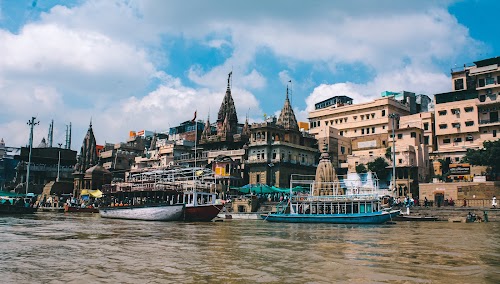
Discover Incredible Places in Varanasi
Explore our handpicked collection of breathtaking destinations across India
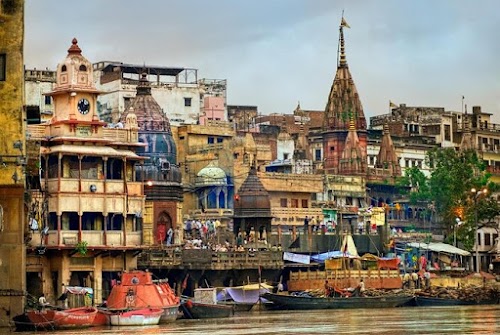
Manikarnika Ghat
Manikarnika Ghat is one of the holiest cremation ghats in Varanasi, India. Located on the banks of the Ganges River, it is believed to be the place where Lord Shiva and Goddess Parvati performed the last rites of Sati. The ghat is constantly burning with pyres, and it is a powerful and moving experience to witness. It is considered highly auspicious to be cremated here, and Hindus from all over India bring their deceased loved ones to Manikarnika Ghat for cremation. The ghat is also a popular spot for tourists to observe Hindu cremation rituals. However, it is important to be respectful of the deceased and their families, and to avoid taking photos or videos of the cremation ceremonies.
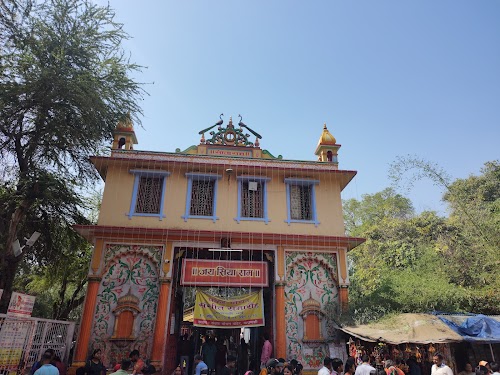
Sankat Mochan Hanuman Temple
Sankat Mochan Mandir, dedicated to Lord Hanuman, is one of the most revered temples in Varanasi. Located away from the bustling ghats, it offers a serene and peaceful atmosphere. 'Sankat Mochan' means reliever from troubles, and devotees flock here to seek Hanuman's blessings for overcoming obstacles. The temple is known for its unique prasad of 'besan ke laddoo' and the presence of monkeys, considered sacred. The temple also houses a small shrine dedicated to Lord Rama and Goddess Sita. The air is filled with devotional music and chants, creating a spiritually uplifting experience. It's a must-visit for anyone seeking solace and divine grace in Varanasi.

Shri Kashi Vishwanath Temple
The Kashi Vishwanath Temple, a cornerstone of Varanasi, is dedicated to Lord Shiva, revered as Vishwanath, 'Lord of the Universe.' This sacred site is among the twelve Jyotirlingas, the holiest Shiva temples. The temple's current structure was built by Maharani Ahilyabai Holkar of Indore in 1780. Its golden spire, donated by Maharaja Ranjit Singh in 1835, lends it the moniker 'Golden Temple.' The temple complex houses several smaller shrines. Pilgrims flock here for spiritual solace, to participate in rituals, and to witness the Ganga Aarti performed on the ghats nearby. The temple embodies the spiritual essence of Varanasi and is a must-visit for anyone seeking a profound cultural and religious experience.
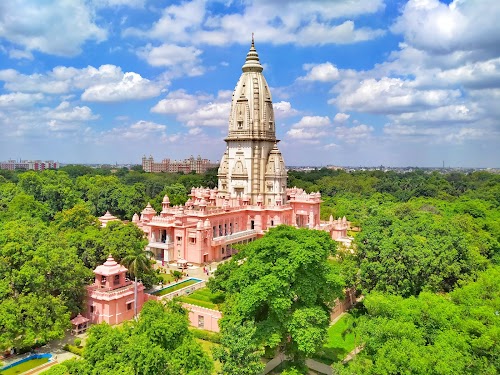
New Vishwanath Temple (BHU)
The New Vishwanath Temple, located within the Banaras Hindu University (BHU) campus, is a stunning replica of the original Kashi Vishwanath Temple. Built by the founder of BHU, Pandit Madan Mohan Malaviya, this temple is also known as the Birla Temple. The temple's architecture is a breathtaking display of North Indian temple style, featuring a towering shikhara (spire) that dominates the skyline. Inside, the temple houses a pristine Shiva lingam, the central object of worship. The temple's serene atmosphere and intricate carvings make it a must-visit for those seeking spiritual solace and architectural marvels. The temple is open to people of all faiths, promoting a sense of unity and harmony.
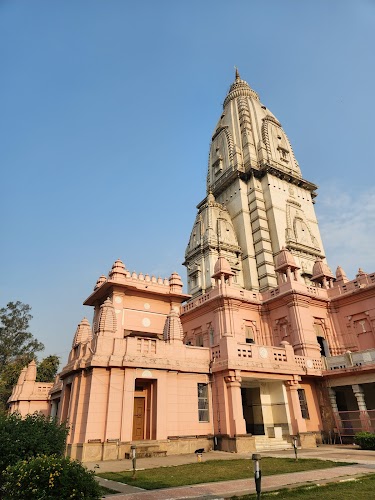
Shri Kashi Vishwanath Temple Corridor
The Shri Kashi Vishwanath Temple Corridor is a revitalized pathway connecting the ancient Kashi Vishwanath Temple to the ghats of the Ganges River in Varanasi, India. It offers a significantly enhanced pilgrimage experience, providing a cleaner, more organized, and accessible route for devotees. The corridor features stunning architecture, intricate carvings, and expansive courtyards, creating a serene and spiritual atmosphere. Visitors can witness the Ganga Aarti ceremony from the ghats, explore the various shops and eateries within the corridor, and immerse themselves in the rich cultural heritage of Varanasi. The project has dramatically improved the area's infrastructure, making it a must-visit destination for both pilgrims and tourists.
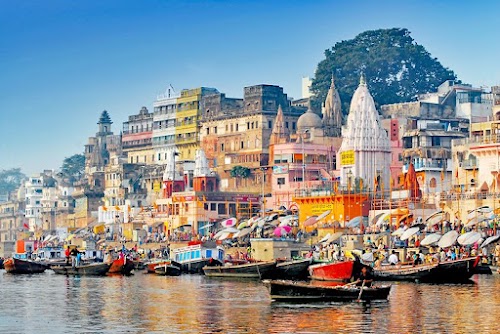
Dashashwamedh Ghat
Dashashwamedh Ghat is the main ghat in Varanasi, India, located on the Ganga River. It is known for its daily evening Ganga aarti ceremony, a vibrant spectacle of light, sound, and chanting. The ghat is a hub of activity, with pilgrims bathing in the sacred waters, priests performing rituals, and vendors selling flowers, incense, and other religious items. Visitors can witness the cremation ceremonies that take place on the ghat, a stark reminder of the cycle of life and death. The ghat's steps offer a panoramic view of the river and the city, especially beautiful at sunrise and sunset. The atmosphere is charged with spirituality and the energy of centuries of devotion.
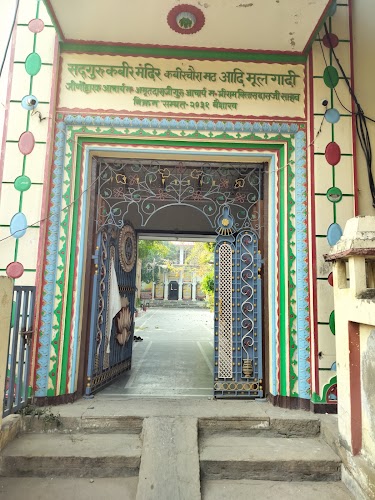
Kabir Chaura Math Varanasi
Kabir Math, located in the Kabir Chaura area of Varanasi, is a significant pilgrimage site for followers of Kabir, a revered 15th-century mystic poet and saint. The Math serves as a spiritual center and a place to learn about Kabir's teachings, which emphasized a formless God and rejected religious dogma. Visitors can explore the main temple, which houses Kabir's seat (gaddi), and the museum showcasing artifacts related to his life and philosophy. The serene atmosphere and the devotional music create a peaceful environment for contemplation and reflection on Kabir's universal message of love and unity. The Math also hosts regular religious discourses and events, providing insights into Kabir's philosophy and its relevance in contemporary times.
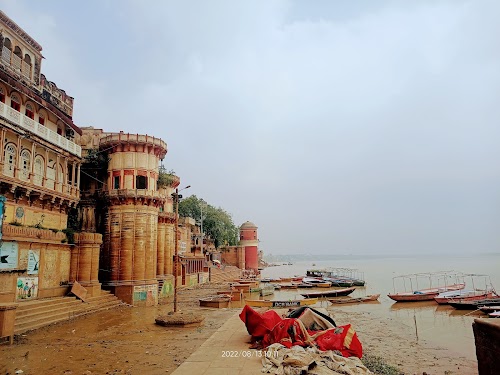
Assi Ghat
Assi Ghat is the southernmost ghat in Varanasi, India, located at the confluence of the Ganges and Assi rivers. It is a significant spiritual and cultural hub, popular among tourists and locals alike. The ghat is known for its serene atmosphere, especially during sunrise and sunset. Visitors can witness the Ganga Aarti ceremony performed every evening, a mesmerizing ritual of light and sound. Assi Ghat also attracts a diverse crowd of students, artists, and pilgrims, creating a vibrant and eclectic atmosphere. The area surrounding the ghat offers various accommodations, restaurants, and shops, making it a convenient base for exploring Varanasi.
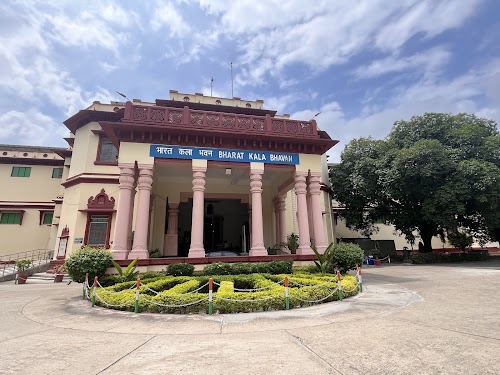
Bharat Kala Bhavan Museum
Bharat Kala Bhavan is a museum located within the Banaras Hindu University (BHU) campus in Varanasi. It's a treasure trove of Indian art and archaeology, showcasing a vast collection of paintings, sculptures, textiles, costumes, and archaeological artifacts. The museum offers a fascinating glimpse into India's rich cultural heritage, spanning from ancient times to the modern era. Visitors can explore galleries dedicated to miniature paintings, showcasing different schools like Mughal, Rajasthani, and Pahari. Sculptures in stone, bronze, and terracotta represent various religious traditions. The museum also houses a significant collection of textiles, including Banarasi brocades and embroidered fabrics. It's a must-visit for art enthusiasts, history buffs, and anyone interested in exploring India's artistic traditions.